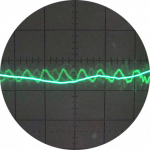Why do we need pressurised systems?
Having had a second occasion where the system pressure for the heat pump dropped to zero (under investigation at present) I go to wondering:
Why do we need a pressurised system in the first place? I have always assumed that a positive pressure is used to ensure a constant supply of water to the pump(s) thus reducing air bubbles which would be purged from the system during circulation and possibly also to avoid risk of cavitation in the pump impellers.
Have I summed it up correctly or am I nowhere near the truth - is there something else I have not thought of perhaps?
Curious Toodles.
Toodles, heats his home with cold draughts and cooks food with magnets.
@iaack I enquired of Wattson and the reply was very much along the lines of that which I surmised Holmes.
Toodles, heats his home with cold draughts and cooks food with magnets.
Posted by: @toodles@iaack I enquired of Wattson and the reply was very much along the lines of that which I surmised Holmes.
@toodles Is that because the AI has searched the forum for information, and has found and paraphrased your own question and assumptive reply back to you, reinforcing your own assumptions (which may well be correct). Just surmising 🤣
Samsung 12kW gen6 ASHP with 50L volumiser and all new large radiators. 7.2kWp solar (south facing), Tesla PW3 (13.5kW)
Solar generation completely offsets ASHP usage annually. We no longer burn ~1600L of kerosene annually.
@old_scientist If that were the case (and it might well be the case I suppose!) perhaps Wattson would be a bestie to a certain President 😉. Oops, Sorry! No Polyticking! Toodles.
Toodles, heats his home with cold draughts and cooks food with magnets.
A good question @toodles. My old open thermal store and oil boiler chugged away quite happily, if expensively, unpressurised. But the header tank was sat right on top of the thermal store in the airing cupboard, with stagnant water sitting at a cosy 30-35degC breeding and growing all manner of questionable organic produce inside it. 🤢
Pressurisation and sealed systems eliminates the crusty & stinky stagnant header tank issue, and almost completely eliminates risk of pump cavitation. There's a net positive pressure at the pump suction inlet far higher than the minimum the pump requires, and at all points in the pipework system for that matter, making pump or system cavitation anathema. So it doesn't really then matter where in a sealed system the circuit the primary and any secondary pump are placed - they'll do what they do, pumping water. It also usually means a quieter running system with less air entrainment & gurgling.
A sealed system eliminates many corrosion risks. Air in systems promotes internal corrosion. Corrosion needs an oxygenated environment to thrive. No air = no corrosion, theoretically.
And yet installers still do strange things, such as fitting auto air valves on sealed pressurised systems. Open system + auto-vent - yes. But sealed system + auto-vent, er, why? Over time the vent will open, and pressure will be lost. I much prefer a manual air vent, which I can open up to let air escape and then check the system pressure on the gauge and top up slightly with the filling loop if need be. A month or two after system filling no more air separates out and, provided the system is holding pressure, the manual vent never needs checking.
- 26 Forums
- 2,396 Topics
- 54.3 K Posts
- 288 Online
- 6,077 Members
Join Us!
Worth Watching
Latest Posts
-
RE: Help me keep the faith with my air source heat pump installation
@batpred Well, I'm running the eBus interface and integ...
By dr_dongle , 18 minutes ago
-
RE: Setback savings - fact or fiction?
That´s an interesting point. The combi that we have is ...
By Batpred , 25 minutes ago
-
RE: Advice for a novice on Mitsubishi Ecodan 6kW
Hi @green_fox As a we have a PUZ-WM80VAA with FTC7 (...
By RobS , 57 minutes ago
-

RE: New Fogstar 15.5kWh upright solution
Let me point out that there are many Chinese suppliers ...
By Transparent , 3 hours ago
-
RE: New Mitsubishi Ecodan 11.2kW installation - L9 errors and maybe more
@jamespa Thanks very much for this, and for mentioning ...
By anotherdaveuk , 3 hours ago
-

RE: Weather compensation- why you should use it
@majordennisbloodnok — The Two Ronnies Mastermind sketc...
By cathodeRay , 3 hours ago
-

RE: Recommended home battery inverters + regulatory matters - help requested
The Regulations specify the export limits in Amps. If...
By Transparent , 3 hours ago
-
RE: ASHP Energy Consumption: Aira 12kW heat pump
@wally Hope your issues are sorted out soon. We have ...
By ChandyKris , 4 hours ago
-

RE: Electricity price predictions
As electricity prices continue to rise and specialist h...
By Mars , 6 hours ago
-
Just realised that this image of the cylinder cupboard ...
By Sheriff Fatman , 7 hours ago
-

RE: Rodents! A word of warning for heat pump owners
Two thoughts: 1: Let's ask @david-s if Primary Pro in...
By Transparent , 7 hours ago
-
RE: Solis S6-EH1P8K-L-PLUS – Why I Chose It and What I’ve Learned So Far
In the diagram below, I describe my understanding of th...
By Batpred , 8 hours ago
-
RE: Running from backup generaor in powercut?
@batpred Thanks for the warning. definately a job for a...
By Pipcart , 8 hours ago
-
I need to have a look out for it. I know IBM feeds some...
By Batpred , 8 hours ago
-
RE: Heat pump not reaching flow temperature
is the house warm enough?
By davidnolan22 , 13 hours ago
-
RE: Daikin Atherma ASHP Cycling 6 Times an Hour?
Thanks for your reply. Yes that's a good idea to try a...
By John Marshall , 14 hours ago
-

RE: Hot water heating in parallel with space heating
An external heat exchanger would need a pump which woul...
By bontwoody , 14 hours ago
-
RE: Gen 6 Samsung ASHP losing 20C of DHW in 60 min directly after generation
@ecobaker Thanks for this. I've had it in both slots. ...
By andbeck , 1 day ago
-

RE: Air source heat pump circuit not operational
Welcome to the forums. If the thermostat shows it’s c...
By Mars , 1 day ago



